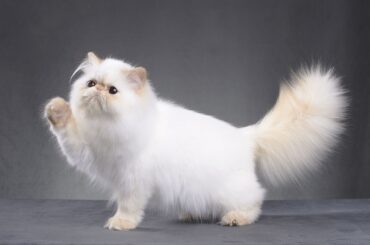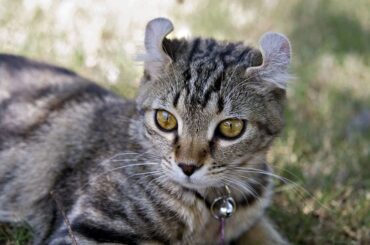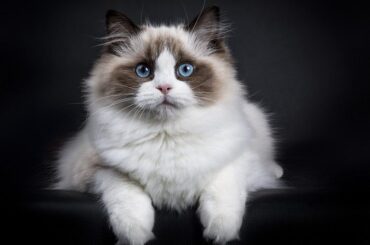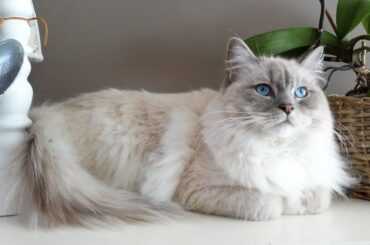Table of Contents
Unveiling the Charm of Orange Ragdoll Cat
A Ragdoll cat is always referred to as an orange Ragdoll cat because of their reddish-yellowish color, a red or cream. Whether you choose to refer to them as Cream or Red Ragdoll Cats, they are still a kind and endearing breed of cats.
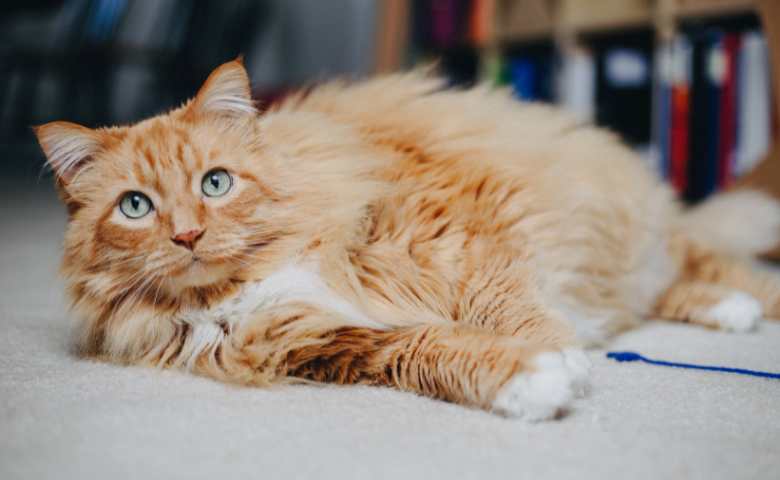
Everything you need to know about Orange Ragdolls will be covered in this extensive article, including typical health concerns, grooming and dietary requirements, ideal living circumstances, and a variety of coat patterns. So keep reading to learn more about Orange Ragdoll Cat.
What is an Orange Ragdoll Cat?
There are numerous names for the various colors, markings, and patterns found in ragdoll cats, making the world of Ragdoll cat colors an intriguing subject! We must first comprehend the basic colors of Ragdoll cats in order to learn about orange Ragdoll cat.
The three primary coat colors of Ragdoll cats are chocolate, seal, and red. These hues will fade to cream, lilac, and blue if they also have the coat color dilution gene.
Then, three distinct patterns—colorpoint, mitted, and bicolor—as well as lynx or tortoiseshell variations, can affect this underlying coat color.
What role do orange Ragdoll catsplay in this, then? Well, Ragdoll coat colors and variations depending on the hue of the red coat are referred to as orange. The red color of ragdoll cats’ coats often appears orange due to the variation in tint throughout their bodies.
This orange-red coloring results from a pigment called pheomelanin, which is very dense in the darker fur on the tips of the ears, paws, and other points; on lighter body hair, it will appear as a pale orange color. Cream Ragdoll cats also have this pigment, but it is much lighter; this gives their fur a subtle hint of orange that changes with the seasons.
Are Flame Ragdoll Cats The Same As Orange Ragdoll Cats?
One kind of orange Ragdoll cat coloring is referred to as flame point, fire point, or flame Ragdoll cats. This cat has intense orange pigmentation in its point fur due to its red base coat colors. As a result, the body hair has a lighter orange gloss and the fur takes on a spectacular flame-like appearance.
The good news is that the Ragdoll breed standard and breed societies accept flame Ragdoll cats as show quality. Thus, should you be fortunate enough to obtain a flame Ragdoll cat, it will have the ability to participate in events and contests.
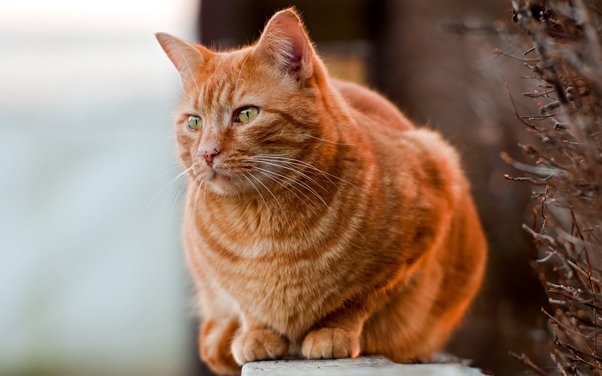
Orange Ragdoll Cat Physical Appearance
Except for their color, Orange Ragdoll Cats are physically identical to all other Ragdolls. Their eyes are blue, their fur is medium length, and their extremities have distinct color spots. Lengthy and rectangular in shape, Ragdoll bodies have wide chests and lengthy tails. Their legs are long and robust, with the back legs being significantly longer.
Additionally, their large head is identical in width from the base of the ear to the muzzle on all sides. The rounded tips of the ears are widely spaced on the skull. The eyes have a slight slant and are big and oval in shape.
An orange Ragdoll cat has a medium-length coat that is largely composed of guard hairs and has little to no undercoat.
The possible color patterns of the Orange Ragdoll Cat are as follows:
- Red Colorpoint: Points in the ears, face, legs, and tail are apricot to red with a white body coat and some shading of red.
- Red Mitted: Same as colorpoint except there is white fur on the paws. The chin is also white that extends to the belly. Some will exhibit a white blaze on the nose or forehead.
- Red Bicolor: Points are found on the ears, tail, and face which is interrupted with a white inverted ‘V’ shape. There is also red shading on the back called a ‘saddle.’
- Cream Colorpoint: Points same as the Red Colorpoint but with a pale cream to pink tone.
- Red Lynx: Points have deep red and light red striping or ticking.
- Cream Lynx: Points have striping or ticking of light pink and whitish-cream bars.
Orange Ragdoll Cat Personality and Temperament
Ragdolls are renowned for their peaceful, gentle personalities, mellow temperaments, and puppy-like traits.
This also applies to orange Ragdoll cat, yet some studies indicate that they may be more outgoing than their differently colored counterparts. Additionally, some research suggests that orange Ragdoll cat males are generally friendlier, more energetic, and more loyal to their owners.
However, regardless of the color or pattern, the Ragdoll cat is more dependent on his family than other cat breeds are, and he prefers to spend his time with them. He loves spending time with his family and is usually content to be held and caressed.
Ragdolls are unique in that they prefer to remain low to the ground, earning them the nickname “floor cats.” They don’t behave like other cats do, which is to prefer perching on a high spot so they can look around for potential prey and danger.
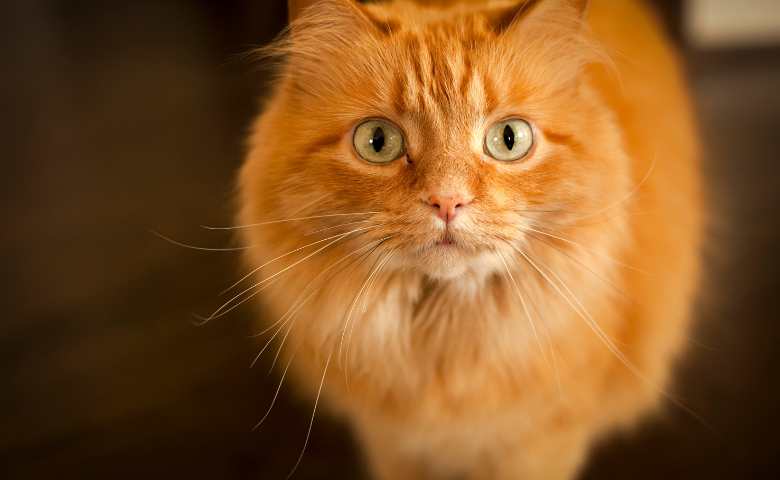
Raising an Orange Ragdoll kitten
Throughout their first year and beyond, Ragdoll kittens require a great deal of care and attention. You must provide them numerous of opportunity for both physical play and mental stimulation, in addition to teaching them how to use a litter box and instilling in them the habit of scratching against scratching posts rather than furniture.
Orange Ragdoll Cat Training
Using cat treats to keep your Ragdoll motivated and providing other positive reinforcements, like petting them on the body or stroking them behind the ears, will go a long way in letting them know that their actions are appreciated. Training sessions should be brief and enjoyable to prevent boredom. Ragdolls are highly obedient and can easily be trained, not just litter box training or basic commands, but also certain cat tricks.
Orange Ragdoll Cat Exercise Requirement
The best thing about Orange Ragdoll cat is that they prefer to spend most of their time relaxing at home and only need little exercise each day.
Naturally, though, you should allow them to play for at least 15 to 20 minutes every day—whether it’s through fetch or ball games—in order to keep them physically active and prevent feline obesity.
Orange Ragdoll Cat Grooming and Cleaning
Grooming an Orange Ragdoll cat’s long, thick fur is a part of being their owner. This entails brushing or combing her fur as often as you can. If you neglect to do so, her fur may get matted and ugly, necessitating a trip to the groomer—a costly affair, as we all know. Consider using a Furminator de-shedding comb to avert that situation. Because it removes approximately 90% of loose hair, this instrument is highly recommended by experienced cat groomers.
Giving him a warm, pleasant bath with a mild cat shampoo at least once a month is another crucial aspect of grooming.
Don’t neglect his dental hygiene and care either. For healthy gums and teeth, make sure you use an enzymatic toothpaste when brushing his teeth.
Orange Ragdoll Cat Food and Diet
Because it contains more moisture, wet or canned cat food is the best option for your feline friend. Give him two pieces, each measuring between ½ and ¾ cup.
Try switching up the protein source, such as fish, chicken, beef, or lamb, every few months or every other month to make his diet look more appealing.

Orange Ragdoll Cat Health Issues
The propensity of Orange Ragdoll cat to inherited illnesses like these five (5) is one of their health problems.
- Hip Dysplasia: Hip dysplasia is an orthopedic condition that is a result of misalignment in the hip joint area. Avoiding the stairs and lameness are two of the signs.
- Kidney Disease: There is a high chance that a Ragdoll will inherit some kidney diseases including Polycystic kidney disease which is characterized by having small tumors in the kidneys that grow with age.
- Heart Disease An estimated 30% of Ragdolls have genetic mutations that would most likely lead to the thickening of the heart muscles, a condition referred to as hypertrophic cardiomyopathy.
- Gastrointestinal Disease: Ragdolls are known to have a sensitive digestive system which makes them prone to diarrhea, inflammatory bowel disease, and celiac disease.
- Eye Disease: Genetics plays a major role in the development of eye problems in Ragdolls, including having cross eyes. Apart from that, some of them may also inherit progressive retinal atrophy which can lead to blindness and cataracts.
Is the Orange Ragdoll Cat right for me?
Because of his kind and caring nature, an Orange Ragdoll cat makes the ideal friend for anyone. He is amiable, enjoys spending time with his humans, and is secure among children.
But your Ragdoll cat is probably going to experience separation anxiety if you work long hours or have to travel regularly for work. Your Orange Ragdoll will exhibit signs of separation anxiety, such as increased meowing, inactivity, excessive grooming, and avoidance of you.
READ ALSO
- Minskin Cat Price: A Comprehensive Guide to Understanding the Investment
- Minskin Cat for Sale: Find Your New Furry Friend Today
- The Russian Black, White And Tabby Cat
- Russian White Cat With Complete Breed Information – Characteristics, Behaviour And Caring
- Raas Cats Breed – 6 Comprehensive Body Characteristics, Behaviour, And Health
FAQs
Can Ragdoll cats be orange?
Flame Point Ragdoll kittens are typically all-white when they are first born and for the first weeks or months of their life. As they age, their red and orange markings will start to slowly appear until the markings are fully formed as teenagers or adults.
How much does a Ragdoll orange cat cost?
If you can't find someone giving away a Ragdoll cat or find one to adopt, the next choice is going to a breeder to purchase one. If you find a reputable breeder, and it's extremely important that you do, it will run you anywhere from $1,000 to $2,500 to purchase a Ragdoll kitten.
Why do Ragdolls have blue eyes?
The way it works is that the protein determining fur color is only activated in the parts of the body that have the coolest temperature. In cats, those are the regions furthest away from the core. The genes that determine point-coloration also affect eye color. Almost all Ragdolls will have piercing blue eyes.

